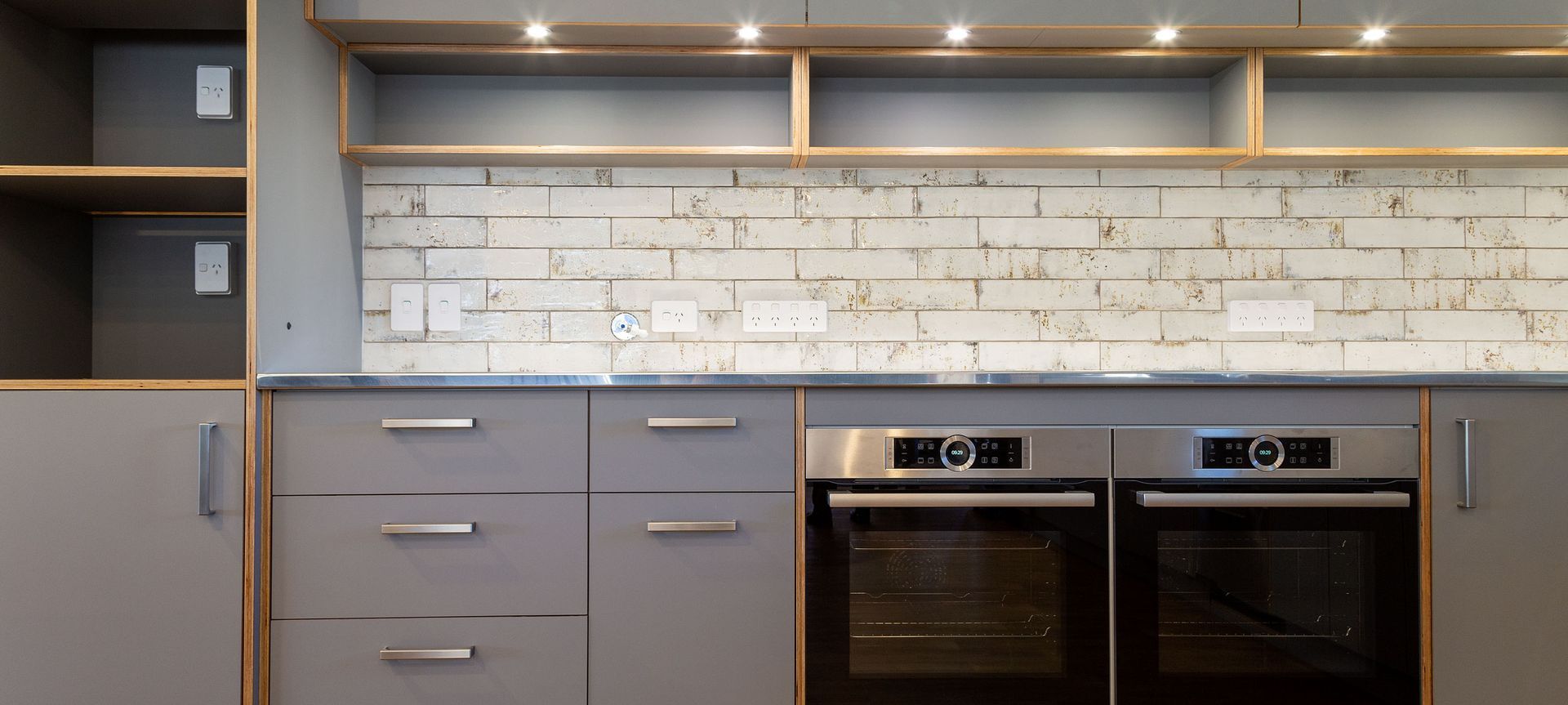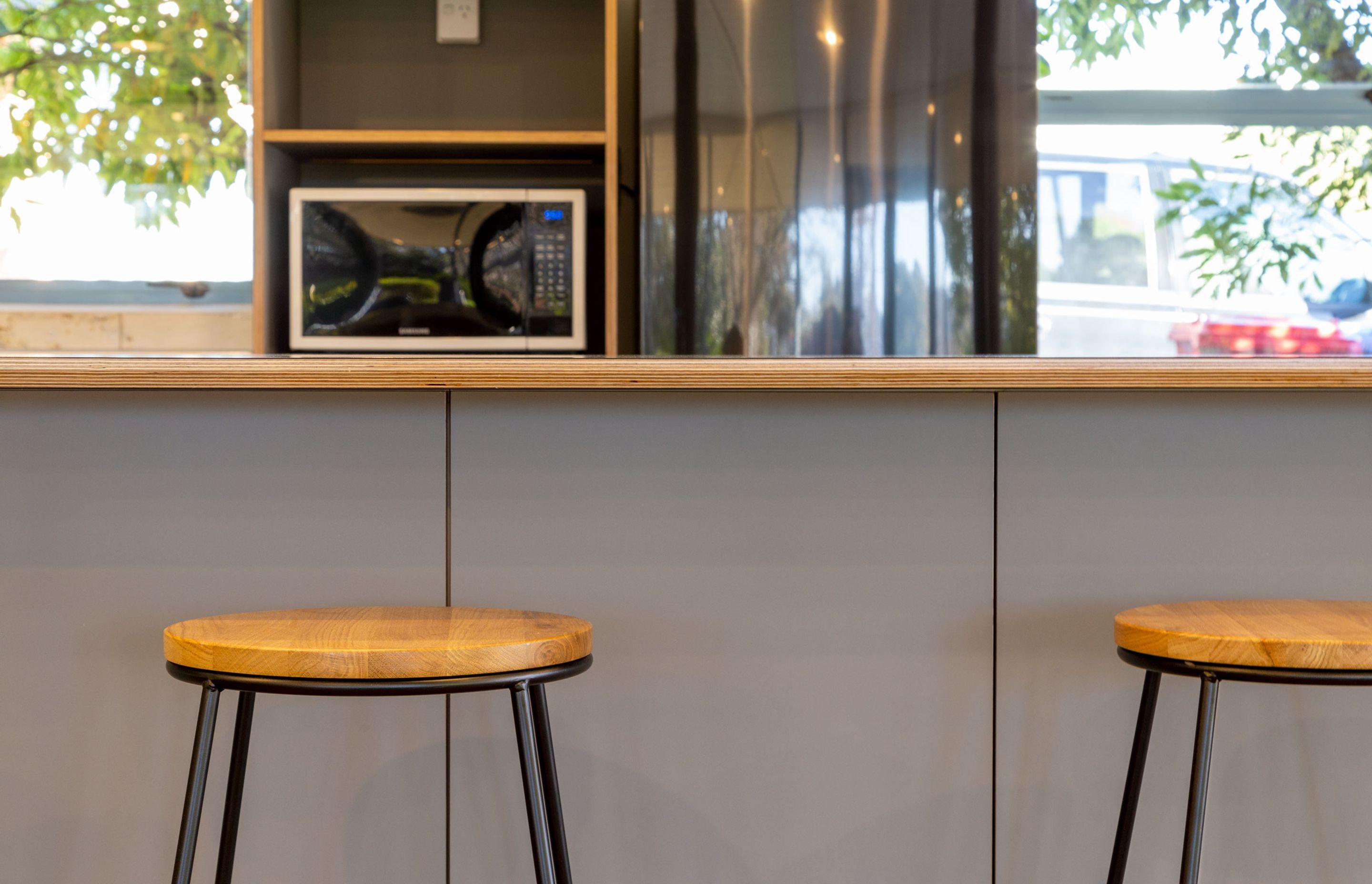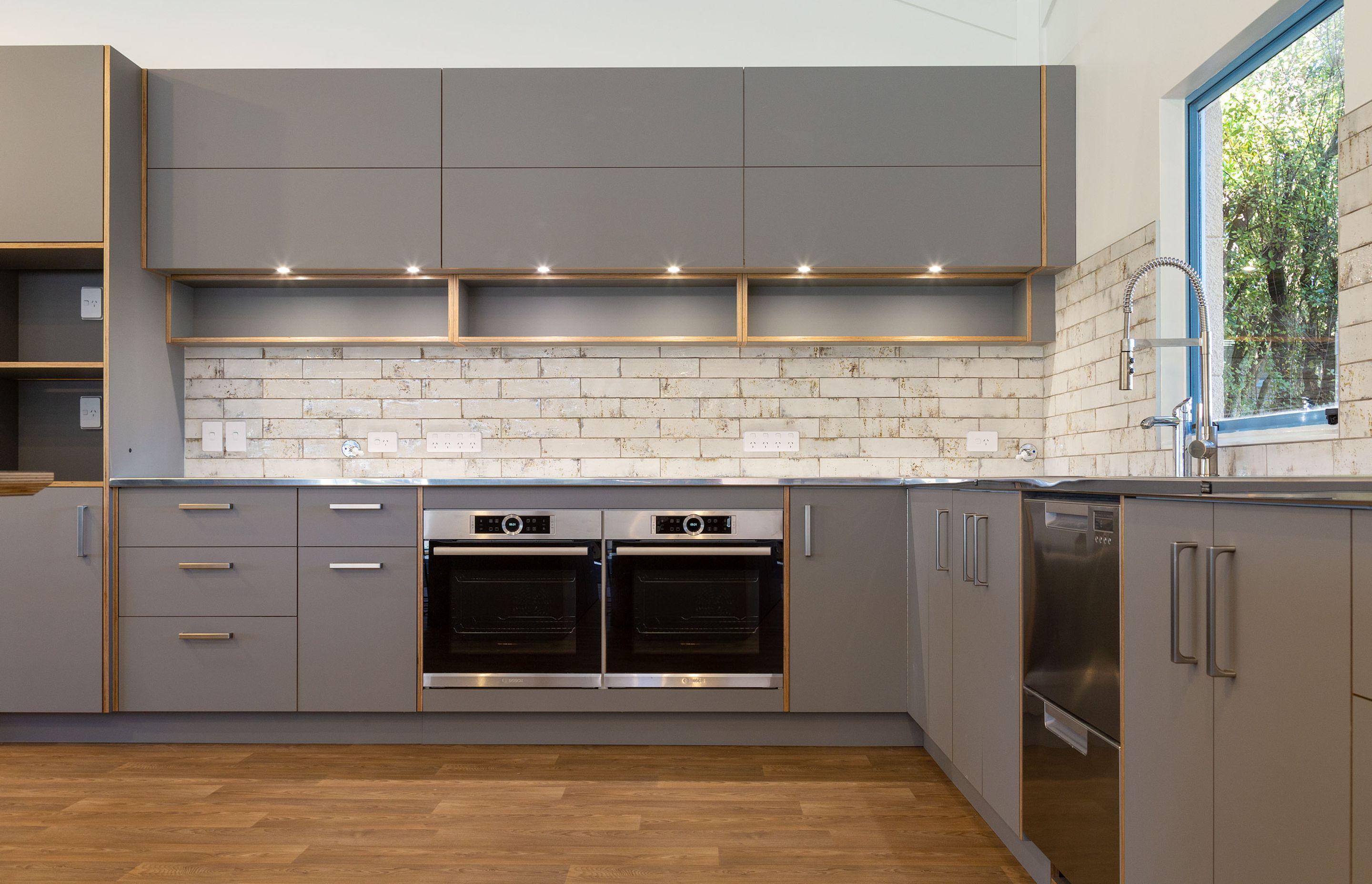Designing Kitchens for Workspaces
Written by
28 July 2019
•
3 min read

Kitchens designed for use by more than 100 people every day are very different to those designed for occasional use in the home. We spoke to Plytech about what materials make a great workspace kitchen.
In the Taupo volcanic zone near the Wairakei geothermal field sits a predominant building. It is the world’s second largest geothermal power station, owned and operated by Contact Energy, and the first to use flash steam from geothermal water to generate electricity. Here, near the banks of the Waikato River just north of Taupo, Wairakei Power Station is now in its sixth decade of energy production.
With more than 100 staff, it’s a busy place. And, like many workplaces, the communal kitchen and dining area is the social hub of the workplace. So it was here where careful consideration of materials was taken into account with the aim of designing a user-friendly yet durable and enticing kitchen for use by over 100 people on a daily basis - for everything from microwave lunches to tea breaks and staff barbecues.
For designer Jack Bradbrook of Interior Fittings, the choice to use plywood for the extensive cabinetry and benchtops came easily.
“When designing a kitchen space for heavy use, material selection becomes a very important factor right from the outset. In a residential situation, the family kitchen is often used by a handful of people, a few times a day. While material choice is important for aesthetic reasons, function and durability factors are not the same as they are in a workplace kitchen,“ says Jack.
“Knowing that the staff kitchen area for Contact Energy was to be used by around one hundred people a day, I wanted to ensure we used the correct products to withstand its heavy workload and ensure it remained aesthetically pleasing for many years to come.”
For these reasons, the Contact Energy kitchen cabinetry – all twenty-seven square metres of it – is made entirely from Futura HPL – Matt, a European Birch plywood with an anti-fingerprint matt laminate.
The matt Futura HPL range of six colours was released in early 2019,” Plytech’s Harmen Kamsteeg says. “It is a great product for cabinetry, and with the Birch sourced from Latvia - the quality is very hard to beat. “The laminate is manufactured by a German company called Egger, which again, is a superior product. The laminates are FSC certified, provide anti-fingerprint properties, and are smooth and velvety to the touch. Harmen says.
“Another unique feature of Birch plywood is the really unique edge detail, which is often left exposed to create a defining design element in the joinery. Due to its ultimate durability, Futura HPL is often favoured for projects such as schools and kindergartens, but it is specified everywhere - from residential to retail outfits.”
For Contact Energy’s kitchen, the exposed edges of the ply have been sanded and treated with a hardwearing oil which adds richness to the edge detail and character to the space. The result is an incredibly strong, stable and hard-wearing kitchen, which is durable and functional but also warm and stylish, everything you’d want in a great commercial kitchen.
Plytech’s Futura HPL has been used in a wide range of applications from schools and cafes to designer furniture.
If you’re looking for a high quality cabinetry material that combines durability with style, make sure you visit Plytech on ArchiPro here to find out more about the latest range.


